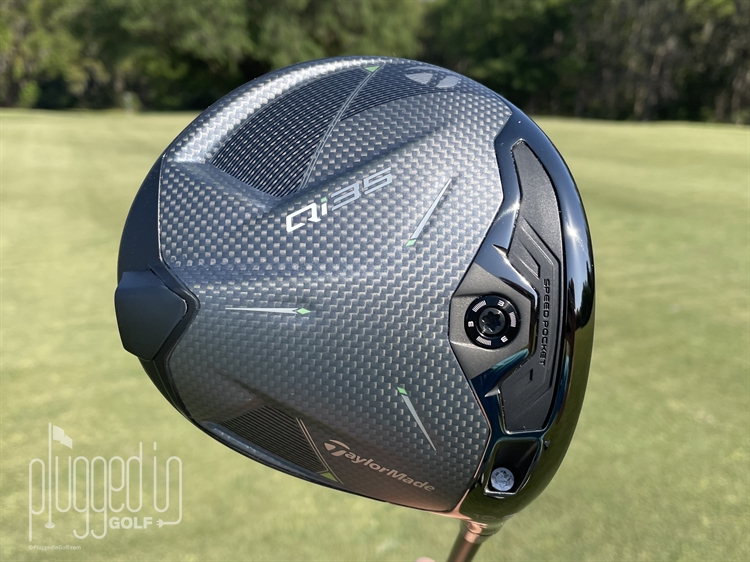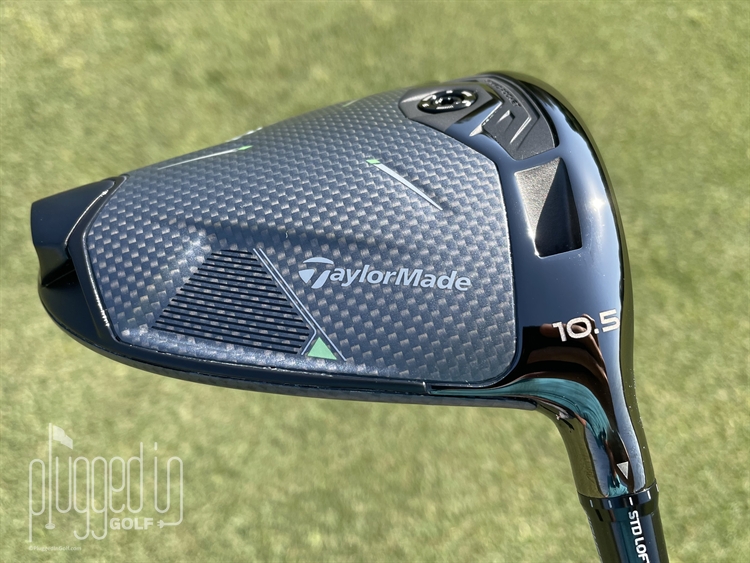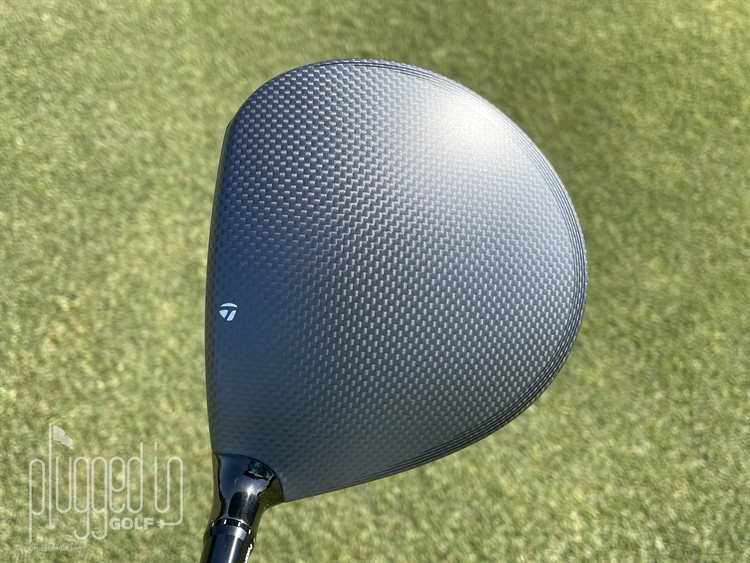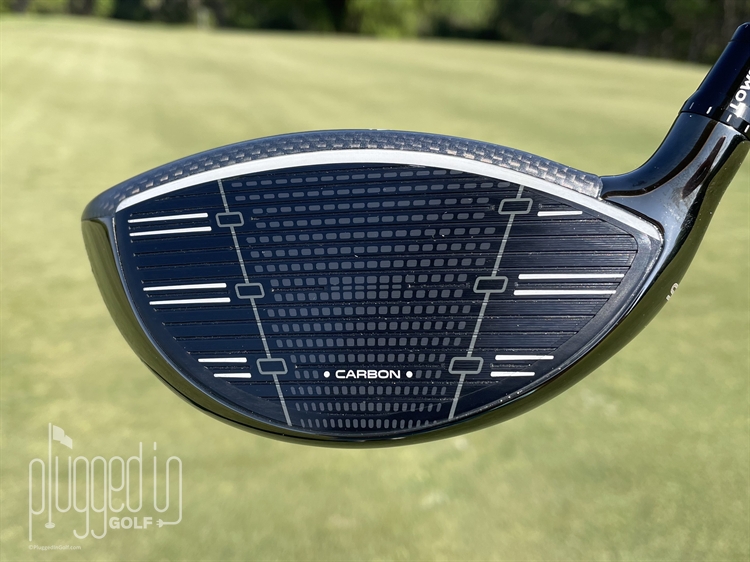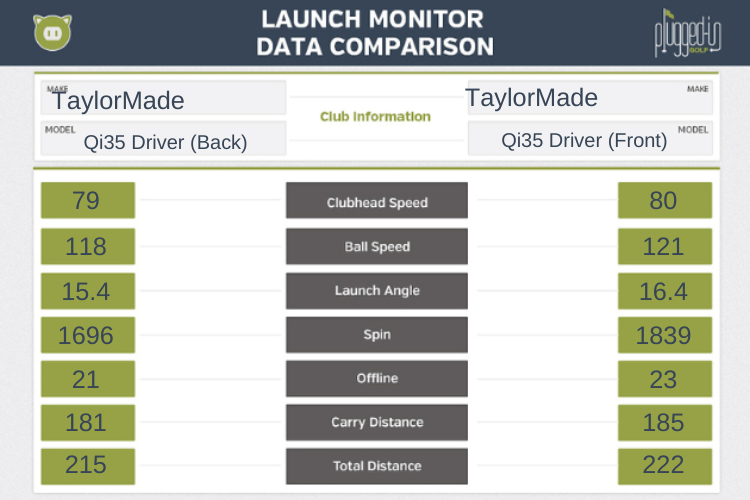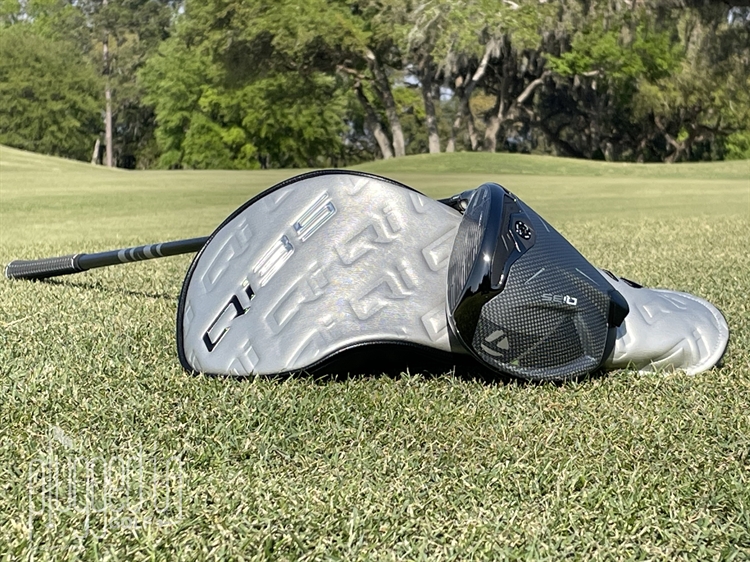50 Words or Less
The TaylorMade Qi35 driver is the core model in the Qi35 lineup, designed to deliver performance to a wide array of golfers. Front and back moveable weight system provides trajectory adjustability. Fresh new look at address. Powerful and addictive sound and feel.
Introduction
The TaylorMade Qi35 driver is often referred to as the core model, as it doesn’t have any other distinguishing moniker. The Qi35 driver is designed to fit the performance needs of “a wide array of golfing abilities.” That leaves the door pretty wide open, but with four distinct models, TaylorMade gives you options to best suit your needs. Better golfers may prefer the lower spinning Qi35 LS [review HERE], while those who need a bit more forgiveness might be a better fit for the 10K Qi35 Max [review HERE]. TaylorMade also offers the Qi35 Max Lite [review coming soon] for golfers who need help with swing speed.
As a golfer who often demonstrates a wide range of ability within a single round, I was anxious to test the TaylorMade Qi35 driver – let’s dig in.
Looks
Seeing the TaylorMade Qi35 driver for the first time can be a bit of a ‘whoa’ moment. The matte finish of the dark grey composite crown is a steep departure from the glossy black Qi10 [review HERE]. Same thing with the sole. You will find some familiar traits like the carbon face and Inertia Generator pod (weight port) that are quintessential TaylorMade.

I found the rounded shape of the TaylorMade Qi35 driver at address very appealing. It’s hard to discern from the photo above, but the core driver (left) appears shallower – sleeker – than the Qi35 Max (right). With the vast area of carbon weave, the five fine pinstripes provide some definition to the trailing edge.
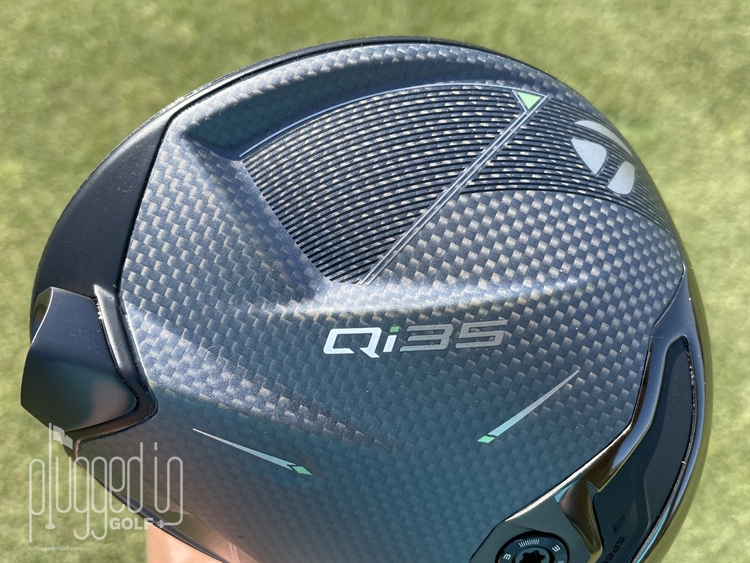
The deep angular recesses on the carbon composite sole are very eye catching. Small pops of green add some visual interest as do some fine striped graphics. Branding is well proportioned.
The fourth generation carbon Twist Face may look like nothing new, but it has a secret story. Those six small rectangles are actually reflective fitting markers – a big deal for fitters with a GC Quad or Trackman launch monitor.
Sound & Feel
Coming off a couple of hours of yard work before my first range session with the TaylorMade Qi35 driver, my back requested a few half swings – perfect for focusing on the sound. What I heard was the familiar staccato ‘tink’ of the Qi35 Max Lite model. As I ratcheted up the speed, the sound moved to more the ‘thwack’ of the Max, but with a slightly higher pitch.
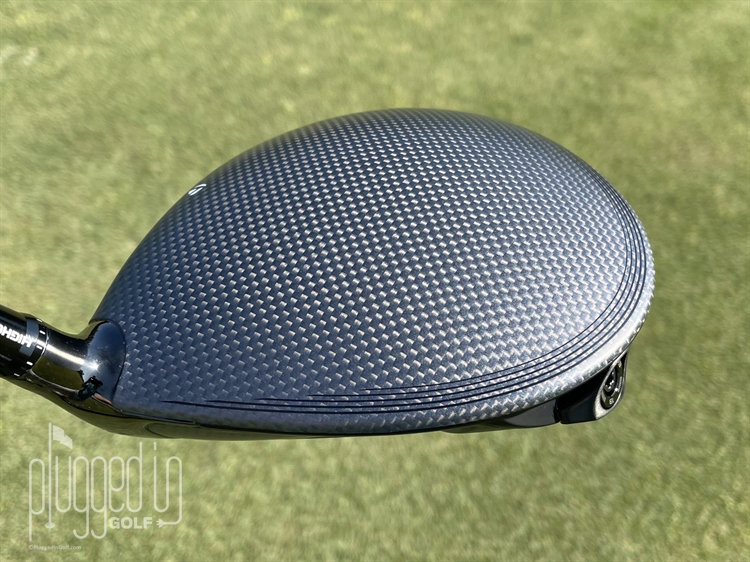
Contact felt firm and powerful. The area where strikes felt solid seemed massive and I had to really focus on location to note any feedback unless truly out on the perimeter. The harmonious combination of the TaylorMade Qi35 driver’s sound and feel was addictive, and I found myself wanting to tee up ball after ball on the range. On the course my satisfaction stemmed more from hearing my playing partners say “That sounded solid.”
Performance
Heading to Club Champion to gather launch monitor data, I was expecting to write off the weight forward positioning for the TaylorMade Qi35 driver. Per TaylorMade’s website, and normal tech thinking, having the heavy weight positioned forward equates to lower launch and lower spin – the opposite of what I need. But as several of my doctors and club fitters have told me – I’m not normal.
As you can see from the graphic above, I achieved higher launch and higher spin with the heavier 13 gram weight positioned forward than I did with it in the rear position. I still can’t explain the 1 mph faster clubhead speed except for the possibility that the overall weighting of the head worked better with my swing. Even when I looked exclusively at my best hit in each setting, the results were similar. As Jason Heintschel, Master Fitter at Club Champion, told me after reviewing my session “This is why fitting is so important. Not everyone fits the general parameters.”
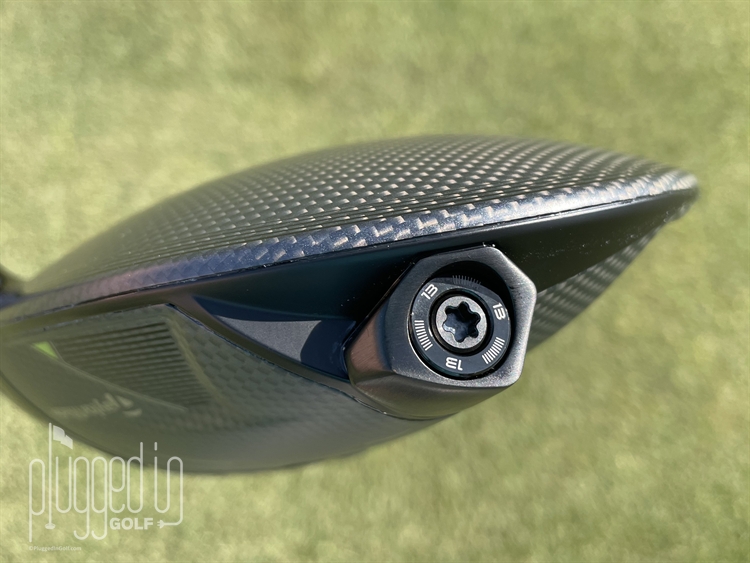
Just shy of the impressive 1.51 Smash Factor of the Qi35 Max driver I had tested prior, the core TaylorMade Qi35 driver averaged 1.50 Smash Factor in both back and forward weight settings. TaylorMade is spot on when they state “more distance from more of the face.” To achieve this, TaylorMade focused on two key design elements: maximizing moment of inertia (MOI) and lowering the center of gravity (CoG) projection.
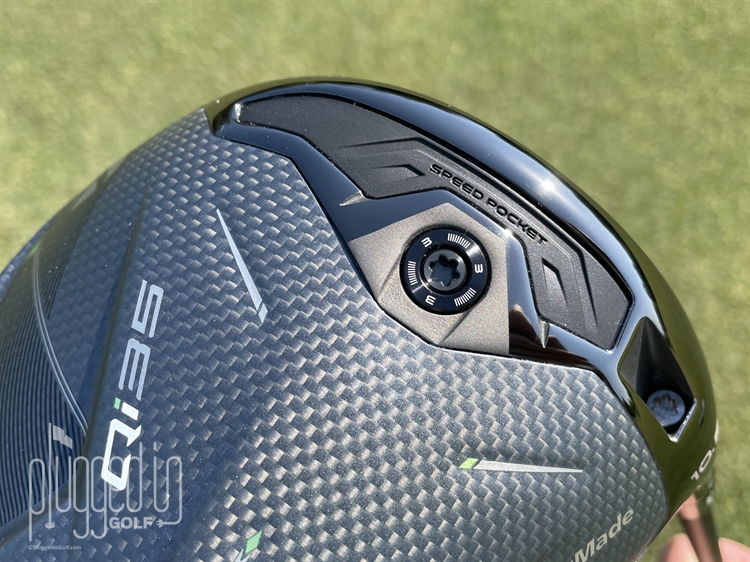
MOI quantifies a clubhead’s resistance to change in rotational motion, the key trait behind forgiveness. Less twist with off-center strikes preserves ball speed and direction. My dispersion was solid in both distance and direction. I had a slight right bias, but that was more indicative of the Ventus Blue shaft profile being a bit stiffer than my gamer. TaylorMade drivers feature the 4° loft sleeve to aid in directional correction.
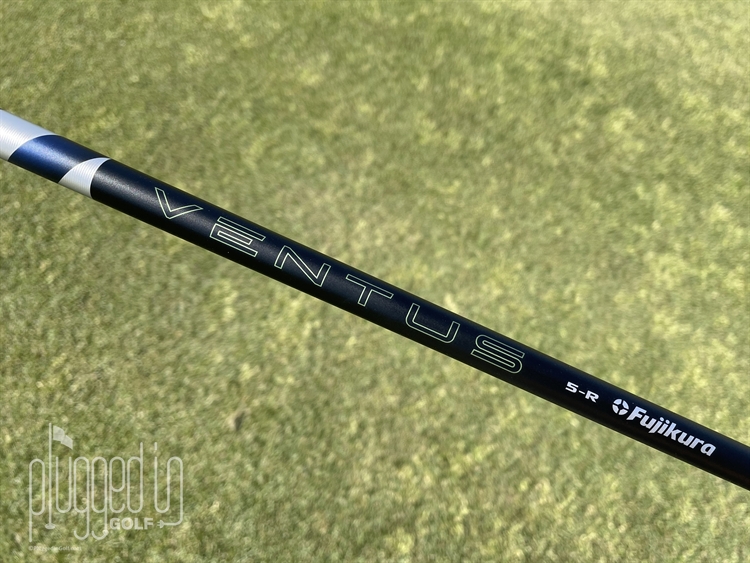
In their pursuit of improving launch conditions, TaylorMade designers made CoG projection a point of emphasis. CoG projection isn’t a new term to club designers, but it’s a fairly fresh concept to us mortal golfers. To visualize CoG projection, imagine balancing the club face on your finger, and then drawing a line from that point through the CoG. By lowering that point on the face, TaylorMade can optimize launch and spin on more of the clubface. The increased area above that point improves gear effect. If all that is somewhat dizzying, just think about the ol’ saying “Tee it high and let it fly.”
Conclusion
Having gamed a TaylorMade driver for several years straight, I must say the look and sound of the Qi35 quickly became my favorite. Reversing the weights – which was super easy to do – was eye opening, and revealed meaningful adjustability. My performance results may be contrary to intention, but they were impactful and significant for my game.
Visit TaylorMade HERE
TaylorMade Qi35 Driver Price & Specs
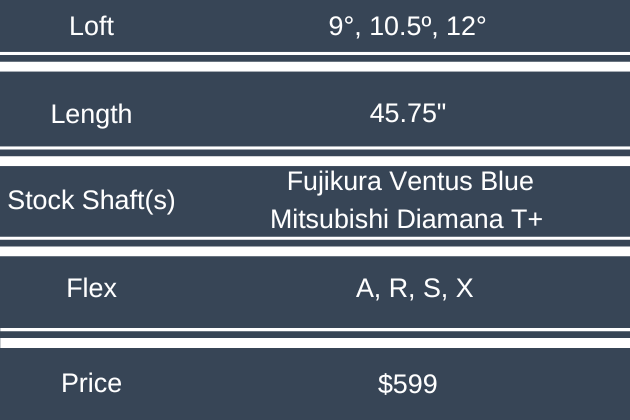
The post TaylorMade Qi35 Driver Review appeared first on Plugged In Golf.

